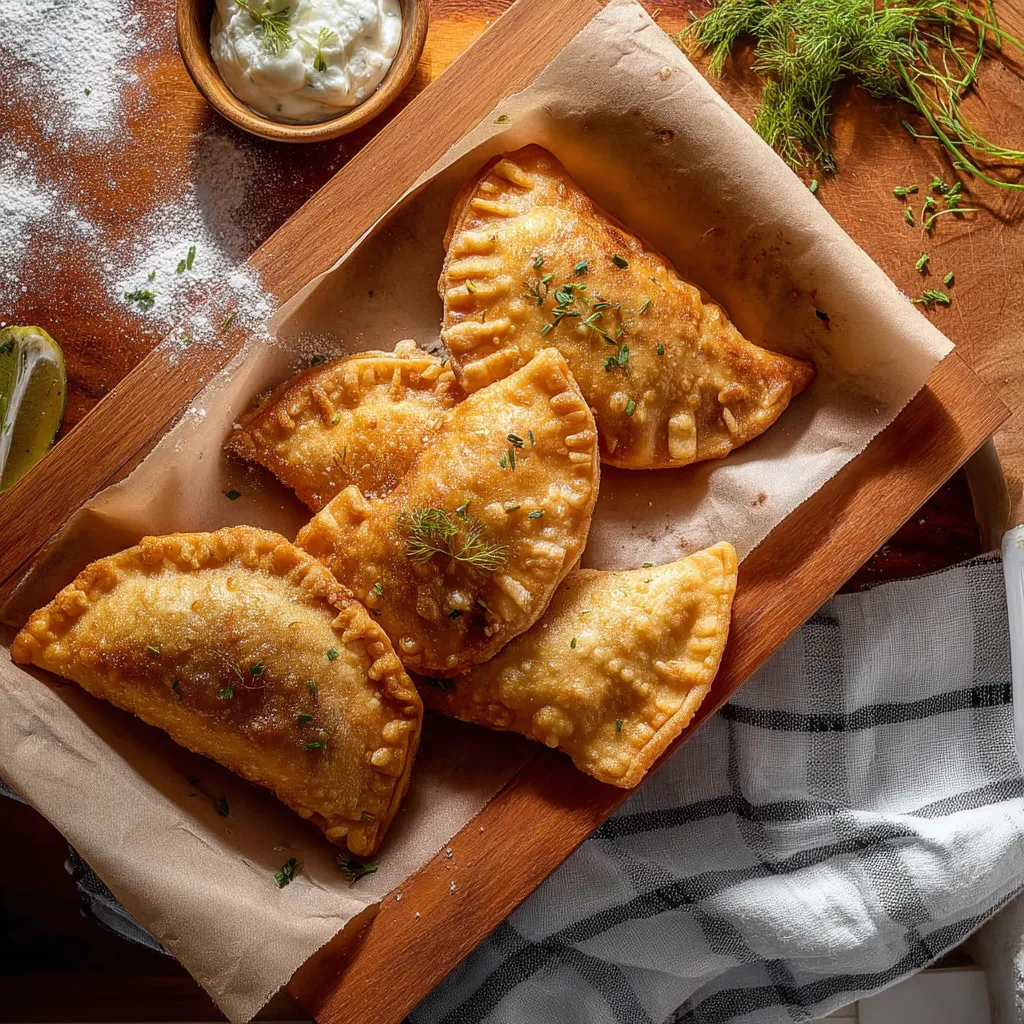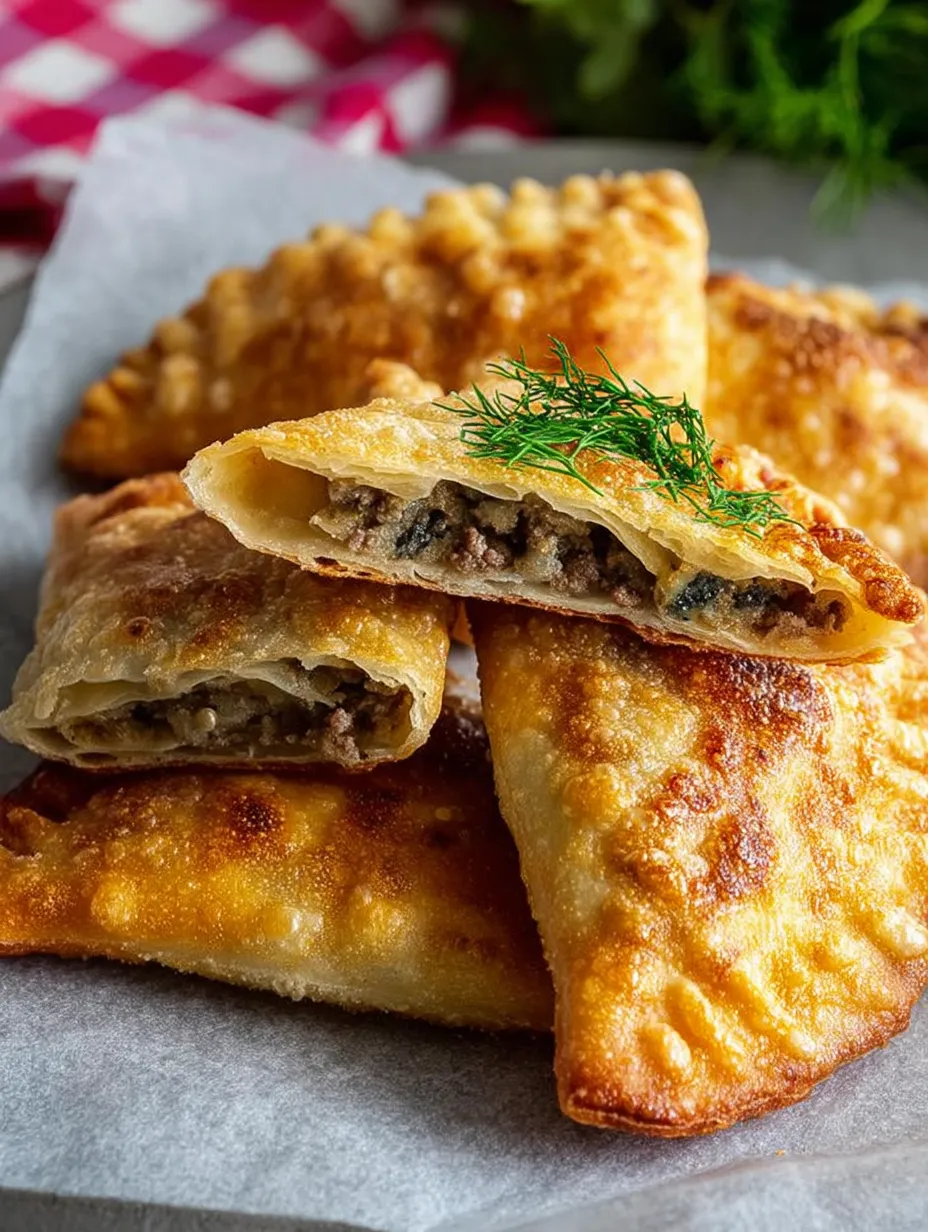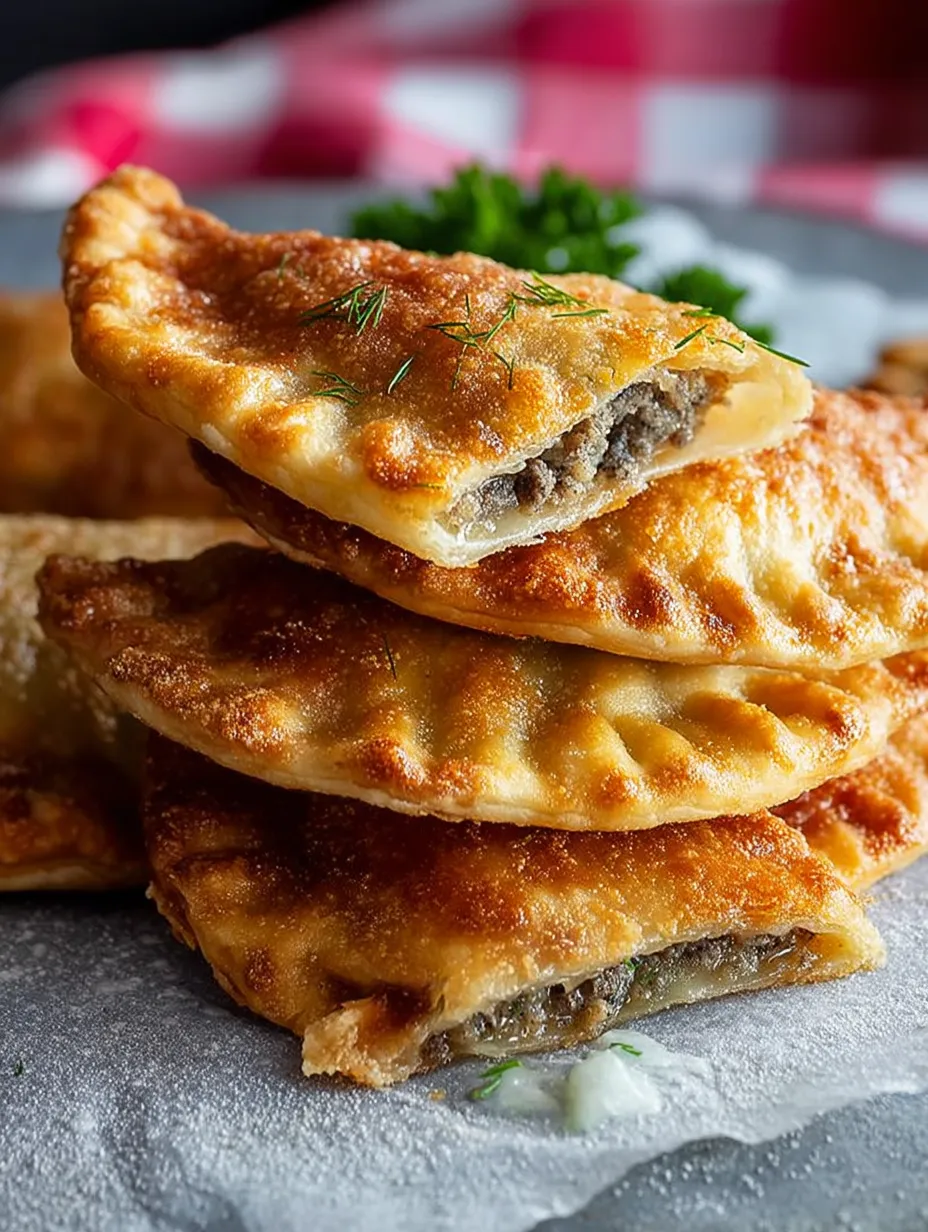 Pin it
Pin it
These golden pockets of joy will transport you straight to a Crimean beachside—crisp, delicious pastries stuffed with tasty ground beef so big you'll need both hands to grab them. They're a proud staple of Crimean Tatar food culture and have won hearts as go-to street snacks across Russia, Ukraine, Eastern Europe, and many Central Asian countries.
I bumped into chebureki during my Black Sea travels and couldn't get enough of that mix of soft and crunchy textures. I've tried making them tons of times at home, and finally nailed this version that takes me back to those sunny days munching these treats while watching waves roll in.
Ingredients
- Plain flour: Gives you that perfect balance—sturdy enough to hold everything but still nice and soft
- Salt: Wakes up all the flavors in your dough
- Water: Gets your dough just right so it stretches and sticks together properly
- Vegetable oil: Keeps everything smooth and stops stuff from sticking
- Brown onion: Brings a natural sweetness that makes the filling taste amazing
- Fatty ground beef: Go for 80/20 beef to keep things juicy inside
- Quality sea salt: Boosts everything without going overboard
- Black pepper: Adds that cozy spice that works so well with beef
- White pepper: Gives a bit of kick without dark spots in the mix
- Ground cumin: You can't skip this for true Crimean Tatar flavor
- Garlic powder: Mixes in better than fresh for even taste throughout
- Fresh dill: The key herb that screams Eastern European food
- Oil for frying: Pick something neutral that can handle heat like canola or sunflower
Step-by-Step Instructions
- Make the Dough:
- Mix your flour, salt, water, and a spoon of oil in a bowl with wet clean hands until you've got a nice ball. Using wet hands stops everything from getting too sticky while giving you better control. Work it on a floured counter until it feels smooth and stretchy, for about 5 minutes. Add tiny bits of flour or water if needed to get it just right. Your dough shouldn't stick to your fingers but should still feel soft. Cover it up and let it sit for a full hour so it can develop properly.
- Prepare the Filling:
- Cook your finely chopped onions in some veggie oil over medium heat until they're soft and see-through but not brown, about 8 minutes. Put them in a cool bowl and let them cool off completely. This cooling part matters because hot onions would start cooking your raw beef too early. When they're cool, mix them thoroughly with your ground beef, all your spices, and chopped dill, using your hands to get everything evenly spread out.
- Form the Chebureki:
- Split your rested dough into four equal chunks about 76g each. On a well-floured surface, roll each one into a thin circle about 12 inches across. Thinner circles make crispier chebureki, but don't go so thin they tear. Spread a quarter of your meat mix on half of each circle, leaving about 15mm empty around the edge for sealing. Make sure your raw meat is spread thin and even so it cooks right when frying.
- Seal the Pastries:
- Fold the empty half over your filling to make a half-moon shape. Before you seal them all the way, check that they're roughly 15-16 cm long and 8-10 cm wide. Press the edges firmly with your fingertips to seal, then make them pretty by pressing with a fork. This double-sealing trick makes sure nothing leaks when frying. If your dough rested properly, it should stick together without needing extra water.
- Fry to Perfection:
- Heat up about 1cm of veggie oil in a medium pan until it's hot enough that a small piece of dough sizzles right away and starts turning gold. Carefully slip in one cheburek and fry until golden brown, about 3 minutes on the first side and 1-2 minutes on the second. The second side always cooks faster, so keep an eye on it. Put it on a paper towel-lined rack to soak up extra oil. Keep your oil temp steady between batches, turning the heat up or down as needed.
 Pin it
Pin it
The dill in these isn't just for show—it's what makes the flavor spot-on authentic. My Russian grandma always told me you could tell good food was coming when the kitchen smelled like dill. Whenever I cook up these chebureki, that smell brings back memories of her tiny kitchen where she'd fry these treats for our family get-togethers.
Temperature Matters
Getting non-greasy chebureki means keeping your oil at just the right heat the whole time you're cooking. Too hot and they'll burn outside while staying raw inside, too cool and they'll soak up oil and turn heavy and soggy. If you've got a kitchen thermometer, aim for 350°F/175°C. Don't have one? No problem. Drop a tiny bit of dough in—it should bubble right away without making smoke. If your oil starts smoking anytime, it's gotten too hot, so pull it off the heat for a bit.
 Pin it
Pin it
Make Ahead Options
What's great about chebureki is how they fit into busy lives. You can make the dough up to 24 hours early and keep it wrapped in plastic in your fridge. Just let it warm up about 30 minutes before you roll it out. You can also shape your chebureki completely, freeze them on a baking sheet, then move them to freezer bags for up to 3 months. When you're ready, fry them straight from frozen—just add an extra minute to cooking time. Or if you want, just make the meat mixture a day ahead and keep it in the fridge. This actually lets the flavors mix even better overnight.
Serving Suggestions
In Crimea, folks often enjoy chebureki with a simple tomato sauce on the side, kind of like a runny salsa. A tangy vinegar slaw works great against the rich pastries. For a full meal, add a classic Russian cucumber and tomato salad with sunflower oil and fresh herbs. Though they're typically street food you grab and go with, putting them on a nice plate with sprigs of dill and lemon slices makes them fancy enough for dinner guests. Round out the experience with ice-cold shots of vodka or kvas, a funky drink made from fermented bread.
Frequently Asked Questions
- → What makes chebureki unique?
Chebureki are deep-fried pockets of dough filled with minced meat, seasoned with spices, and loved in Crimean Tatar traditions.
- → How do I make soft dough?
Knead the dough until smooth and leave it to rest for around an hour. This helps with elasticity and makes it easier to work with.
- → Which meat works best?
Ground beef with a good fat content works great, making the filling tastier and juicier.
- → What adds flavor to the filling?
Season minced beef with onion, cumin, dill, garlic, salt, and a touch of pepper to get that rich, aromatic taste.
- → What oil should I fry in?
Use a neutral-flavored oil like vegetable oil and ensure it’s hot enough before frying for the best results.
